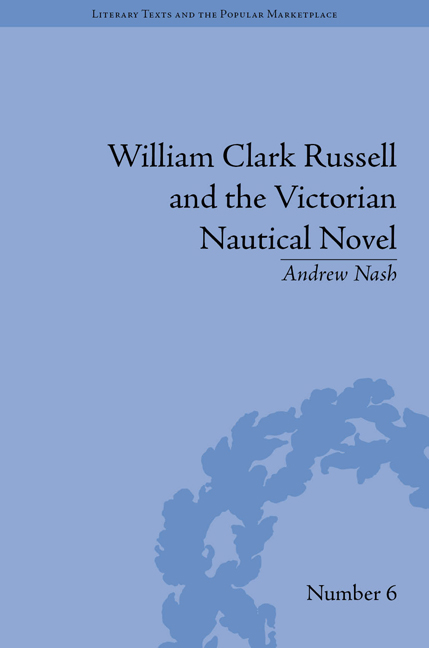Book contents
- Frontmatter
- CONTENTS
- Preface and Acknowledgements
- List of Figures and Tables
- Introduction
- 1 Sailor and Writer
- 2 Writing as a Woman
- 3 Finding the Sea
- 4 Writing the Sea: Genre and Theme
- 5 Writing the Sea: Women and Gender
- 6 Marketing the Sea: Serials
- 7 Marketing the Sea: Books and Publishers
- William Clark Russell: A Bibliography
- Notes
- Works Cited
- Index
5 - Writing the Sea: Women and Gender
- Frontmatter
- CONTENTS
- Preface and Acknowledgements
- List of Figures and Tables
- Introduction
- 1 Sailor and Writer
- 2 Writing as a Woman
- 3 Finding the Sea
- 4 Writing the Sea: Genre and Theme
- 5 Writing the Sea: Women and Gender
- 6 Marketing the Sea: Serials
- 7 Marketing the Sea: Books and Publishers
- William Clark Russell: A Bibliography
- Notes
- Works Cited
- Index
Summary
The discovery of the sea did not immediately change Russell's perspective on the gendered dimension of the novel. Although he later claimed to have gone to sea ‘like a man’ in The Wreck of the ‘Grosvenor’, his stories continued to be influenced by a preoccupation with women and the female reader. With the exception of The Frozen Pirate, his full-length stories always included a love interest and were frequently constructed around the experiences of a central female character. The form and setting of his adventure narratives offer a singular perspective on fictional representations of gender in the period. Removed from the domestic environment, the sea offered a separate sphere which destabilized notions of propriety and conventional roles and behaviour. Nevertheless, although Russell oft en places his men and women in situations that require them to think and act according to different codes of conduct, his presentation of gender difference is resolutely tied to a form of binary opposition that Mary Poovey has identified as a characteristic formulation of ‘the mid-Victorian symbolic economy’. While his seafaring heroines, female captains and cross-dressing sailors might disrupt conventional constructions of gendered behaviour, Russell does not present their transgressions as a negation of what he perceives to be an essential womanhood.
Deflating the ‘Machinery of the Petticoat’ (1882–5)
In his early sea stories Russell appeared intent on distancing his sailor heroes from matters of love.
- Type
- Chapter
- Information
- William Clark Russell and the Victorian Nautical NovelGender, Genre and the Marketplace, pp. 109 - 130Publisher: Pickering & ChattoFirst published in: 2014



